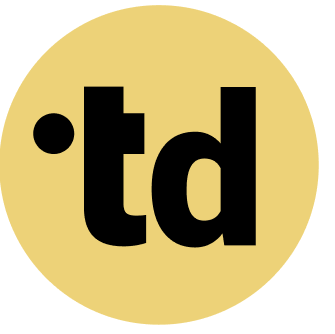Key Takeaways
Effective workload planning is crucial to combat burnout, as 71 percent of German workers feel high levels of stress.
Defining clear roles and responsibilities can make teams significantly more efficient and is foundational to organizational development.
hybrid teams (humans and AI agents) that integrate AI can see a 42 percent boost in productivity, turning workload management into a strategic advantage.
Welcome, Team Architects. You are the heroes tasked with conquering the modern workplace villains: overload, ambiguity, and change fatigue. A staggering 66 percent of European employees feel the strain of excessive work stress, a direct result of broken planning. Traditional charts and outdated team structures can't keep up, costing the German economy a potential €100 billion annually in lost productivity. This guide delivers the effective tool for your quest: powerful workload planning techniques that deliver clarity and flow. We will explore how to build resilient, hybrid teams (humans and AI agents) where humans and AI collaborate seamlessly, turning chaos into a masterpiece of efficiency.
Practical Framework for Team Architects
As a Team Architect, you can apply these principles to your organization:
- Map Current State: Document existing roles and responsibilities using a tool like teamdecoder.
- Identify Gaps: Where are roles unclear? Where do humans and AI agents overlap?
- Define Clear Boundaries: Specify which tasks are handled by humans vs. AI agents.
- Create Accountability: Assign clear decision rights for each role.
- Iterate and Improve: Continuously refine based on team feedback.
The Overload Epidemic: Why Teams Can't Have Fun
The modern workplace is a battlefield where nearly European workers show symptoms of burnout. This isn't just a feeling; it's a systemic issue fueled by poor workload planning where most professionals feel their employers aren't doing enough to help. The old top-down methods fail spectacularly in today's dynamic environment. This prob This problem is worse in hybrid settings, where only a few employees in Germany feel included in the planning process, leading to duplicated efforts. of clarity creates friction and prevents the smooth collaboration essential for high-stakes projects.
Without clear workload management, teams are simply treading water in a sea of tasks. The constant fire-fighting drains energy that should be spent on innovation and achieving strategic goals. This reactive state is a primary driver of disengagement, which can cost a company up to an employee's annual salary. The challenge for every Team Architect is to move from a state of chaos to one of control. But what if you could transform this operational drag into a source of competitive advantage?
Architecting Clarity with Modern Workload Planning
Effective workload planning is the strategic process of distributing work to maximize your team's productivity and well-being. It moves teams from guessing to knowing. For Team Architects, this means using a dynamic tool like teamdecoder to map out tasks, skills, and capacity in one transparent space. This is the first step in successful workload planning. The future of high-performance teams is hybrid, blending human creativity with artificial intelligence. Over 60 pe Over many European companies now have a dedicated AI lead or team, and for good reason."">Integrating AI agents into your workflows can automate repetitive tasks, freeing up your human talent for complex problem-solving. Companies using AI report a significant increase in productivity and a 41 percent jump in process efficiency. This human-in-the-loop model is not about replacing people; it's about augmenting their abilities. It all begins with a crystal-clear understanding of who is doing what, why they are doing it, and how their work connects to the bigger picture. This foundation of clarity is what makes hybrid team (humans and AI agents) governance possible.
Make Bots and Humans Click Through Role Definition
Teams Just Wanna Have Fun, but they can't if nobody knows their part. Role ambiguity is a primary cause of conflict and wasted effort. Architect Insight: The single most powerful workload planning technique is creating absolute clarity around roles and responsibilities. Research shows that teams with clear roles are significantly more efficient and some more effective. This clarity acts as a performance multiplier, especially when integrating AI agents into your team structures. When human roles are defined, you can pinpoint exactly where an AI can provide the most value. You can try teamdecoder for free to start defining these roles today.
Our Playful Tip: Think of roles like players on a sports team-each has a unique position, but they all work towards the same goal. Here is how to achieve that clarity:
- Map all key responsibilities for a project, noting any overlaps or gaps.
- Assign a single, directly responsible individual for each core task to create accountability.
- Define decision-making authority-who needs to be consulted versus who gives final approval.
- Document how AI agents will support specific roles, such as data analysis or content generation.
- Use a tool for visualizing these roles and responsibilities, making them accessible to Many people.
With roles defined, you can move on to mapping the flow of work itself, ensuring a seamless handoff between every team member, human or bot.
From Strategy to Action by Visualizing Team Workflows
Once roles are set, the next step is to visualize the entire workflow. Deep Dive: Agile frameworks like Scrum and Kanban provide excellent structures for managing workload. These systems break large projects into smaller tasks, making it easier to track progress and adapt to change. A core principle is managing team capacity to prevent overload. A proven workload planning technique is to allocate employees to specific tasks for only most their time, leaving most for meetings and unplanned issues. This buffer is critical for preventing the burnout that many employees reported feeling in 2023.
This approach to workload capacity planning is essential for effective strategy operationalization. It connects high-level goals to the daily tasks required to achieve them. By visualizing the workflow, Team Architects can spot bottlenecks and reallocate resources before they derail a project. This proactive management is a key factor in successful change management, where most HR leaders admit their managers are currently ill-equipped. This visibility transforms how teams execute, turning abstract plans into concrete, achievable results.
The High-Flow Payoff from Smarter Workload Planning
The result of implementing these workload planning techniques is a team in a state of flow. When clarity replaces chaos, highly engaged teams become more productive than their disengaged counterparts. This isn't just about speed; it's about building resilient team structures that can withstand the pressures of transformation. Consid Considering that many change initiatives fail due to employee resistance, creating a clear and supportive environment is a massive competitive advantage.that understand their roles and see the workflow are better equipped to handle the constant pace of modern business.
This clarity also fosters psychological safety, where team members feel empowered to contribute ideas and adapt. It creates a culture of accountability and trust, reducing the stress that affects some adults in Germany with a mental illness. By mastering these techniques, Team Architects become true heroes, guiding their teams away from overload and toward sustainable performance. You can see our transparent pricing to find a plan that fits your team's journey. The shift from chaos to clarity delivers measurable returns on every project.
Shape Your Team and Make Change Feel Like Play
You don't need to accept overload and burnout as the cost of doing business. As a Team Architect, you have the power to reshape how your team works together. By implementing smart workload planning techniques, defining roles with precision, and weaving in AI as a powerful collaborator, you build a foundation for success. This is how you lead your heroes to victory over the chaos of the modern workplace. It's how you make your team click and turn ambitious strategies into reality.
Try teamdecoder for free - shape your team and make change feel like play!
More Links
Fraunhofer IAO offers insights into their research area focused on organizational development and work design.
The German Society for Personnel Management (DGFP) provides a collection of publications relevant to human resources and management.
The Federal Institute for Occupational Safety and Health (BAuA) details a research project on occupational safety and health topics.
The Handelsblatt Research Institute presents a study on change management, exemplified by a case at Bayer.
The Association of German Management Consultants (BDU) features an article emphasizing the enduring importance of organizational development.
FAQ
What is the first step in workload planning?
The first step is to gain a complete picture of your team's current workload and capacity. This involves breaking down large projects into smaller, manageable tasks and understanding each team member's availability and skillset before assigning work.
How do you balance workloads in a team?
Balancing workloads requires transparent communication and the right tools. Regularly review individual capacities, prioritize tasks collectively, and use a visual workload management tool to easily see who is overloaded and reallocate tasks. This is crucial for team structures and preventing burnout.
What is the role of a manager in workload planning?
A manager, or 'Team Architect,' facilitates the workload planning process. They are responsible for setting clear goals, defining roles, providing the necessary resources, monitoring progress, and protecting the team from burnout by ensuring workloads are manageable and aligned with strategic priorities.
How often should you review your team's workload?
Workloads should be reviewed continuously, especially in agile environments. A weekly check-in is a good starting point, with more detailed reviews during sprint planning and retrospectives. This allows for quick adjustments and supports effective change management.
Can workload planning improve team morale?
Absolutely. When workloads are fair and transparent, it reduces stress and prevents resentment. Clear roles and responsibilities give team members a sense of ownership and purpose, which boosts job satisfaction and creates a more positive and productive work environment.
What tools can help with workload planning?
Tools like teamdecoder are designed for modern workload planning. They help visualize team structures, define roles, and manage capacity. Other tools include project management software with workload views, such as those based on Gantt charts or Kanban boards.





